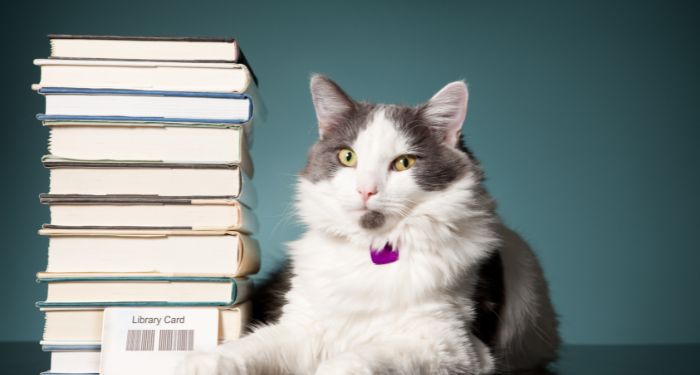This content contains affiliate links. When you buy through these links, we may earn an affiliate commission.
It was a typical day at my university library. I’d headed into campus, into the large, square, brown-brick building, and climbed the stairs to the top floor, where the English Literature books were kept. I was searching along the shelves for the books I needed for my latest essay, when, perched like a bookend, I saw it. A pigeon.
I stared at the pigeon, and it stared back, calm and content. It ruffled its feathers, and cooed softly. It didn’t look like it was going anywhere in a hurry.
“Nope,” I thought, and headed downstairs, out of the library and across the road to the student union centre, where I got a coffee and processed the slight weirdness of my morning so far.
I wasn’t the only person to see a pigeon in my university library. During my time there, I overheard several other students talking about them. In my uni town, the pigeons seemed to be constantly engaged in a turf war with the seagulls that lived along the docks, and I can only assume that the pigeons were trying to make up for being smaller and softer by honing their knowledge in the hope of finding some kind of tactical advantage. Or maybe they just liked literature.
Libraries and animals don’t seem to go together, which is why I and the other students were so unsettled by the pigeons in our library. But despite many libraries being animal-free spaces, there are exceptions — and not only by accident. Some libraries have actively welcomed animals and integrated them into this bookish space, as part of the library service. Interacting with animals can help readers in a huge number of ways — although I still don’t completely trust the campus pigeons.
Check Out These Animals
There’s a lot of evidence suggesting that reading to animals can be a great way for kids to learn. In her article on animal-based reading programmes, Marybeth Kozikowski notes that “Programs in which children read to a certified therapy animal are a well-established success story in libraries nationwide…My children’s department has offered Book Time with a Dog since 2001 with dogs trained, certified, and insured through Therapy Dogs International, one of several national organizations that certify therapy animals.” Reading aloud gives the child the chance to practice their literacy skills, and reading to a dog (or bird, or guinea pig, as mentioned in Kozikowski’s article) is much less psychological pressure than reading to an adult or in front of a class. An animal won’t interrupt or make fun, and so an anxious reader or a child struggling with their confidence might feel more comfortable. This lack of judgment is a crucial part of learning to read; as Jodie Rodriguez notes in her discussion of literacy animals for Scholastic, “A child can stumble through a word, read at a choppy rate, or take an extended amount of time to read a passage. The animal remains a consistent listening companion…Animals don’t mind if a child reads Go, Dog, Go! by P.D. Eastman twenty times.”
Not every child has a pet at home, so a school or public library setting up a ‘read to animals’ programme can be an incredibly helpful way to encourage reluctant readers. There are also many other benefits of having animals in libraries, as several libraries have found. A Library Research Service article explores the use of therapy dogs in libraries; Havard, Yale, and Emory University all have therapy dogs that students can check out for a cuddle or a fuss if exam stress is getting to them.
Animals on Staff
Fiction is no stranger to animals in libraries — one of the most famous fictional library workers is The Librarian from Terry Pratchett’s Discworld novels, a wizard-turned-orangutan who runs the Unseen University library in the city of Ankh Morpork. However, some real-life libraries have elevated animals to staffing positions as well. Lady Margaret Hall, one of the colleges that make up Oxford University, has an official Library Cat, Isambard. Isambard belongs to the college’s Librarian, and visits the college several days a week.
One of the world’s most famous library cats is Dewey Readmore Books, who was the official staff supervisor at the public library in Spencer, Iowa, from the late 1980s until his death in 2006. Dewey became an international sensation, the subject of several articles and documentaries, and the head librarian Vicki Myron wrote a book about his life, Dewey: The Small-Town Library Cat Who Touched the World.
The University of Bath also has a library-based animal on staff. Professor Yoda the Owl protects the university’s library from local seagulls, often keeping them away just by being present. As a reward for his work, Yoda has been issued his own library card.
While most libraries have a no-animal policy (with exceptions such as service animals belonging to library users), the examples above show that animals are often beneficial to both libraries and their users, even if they aren’t a traditional part of the library environment. For more innovative library schemes, try Not All Heroes Wear Capes: The Fairfield Library Introduces Work and Play Stations. For more on libraries that check out unusual loans, have a look at 5 Unexpected Items Your Library Will Lend You.
